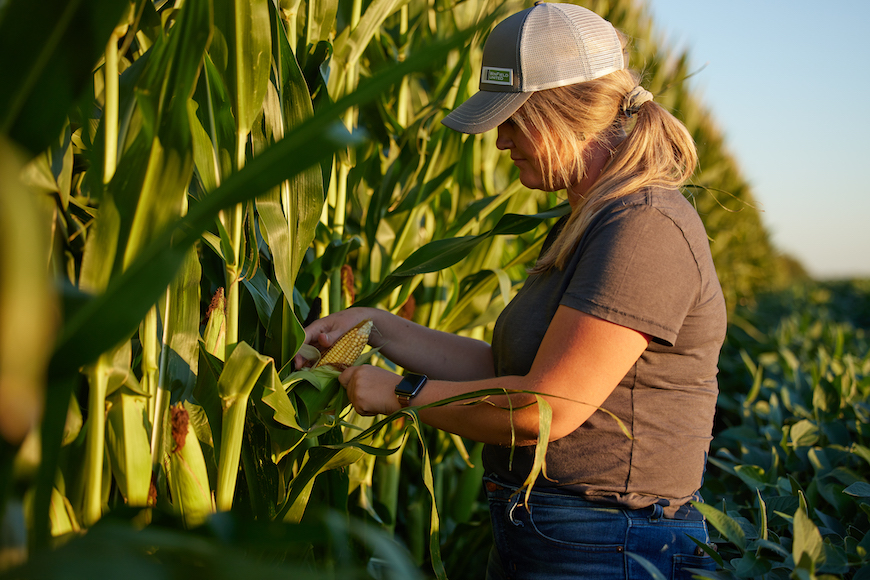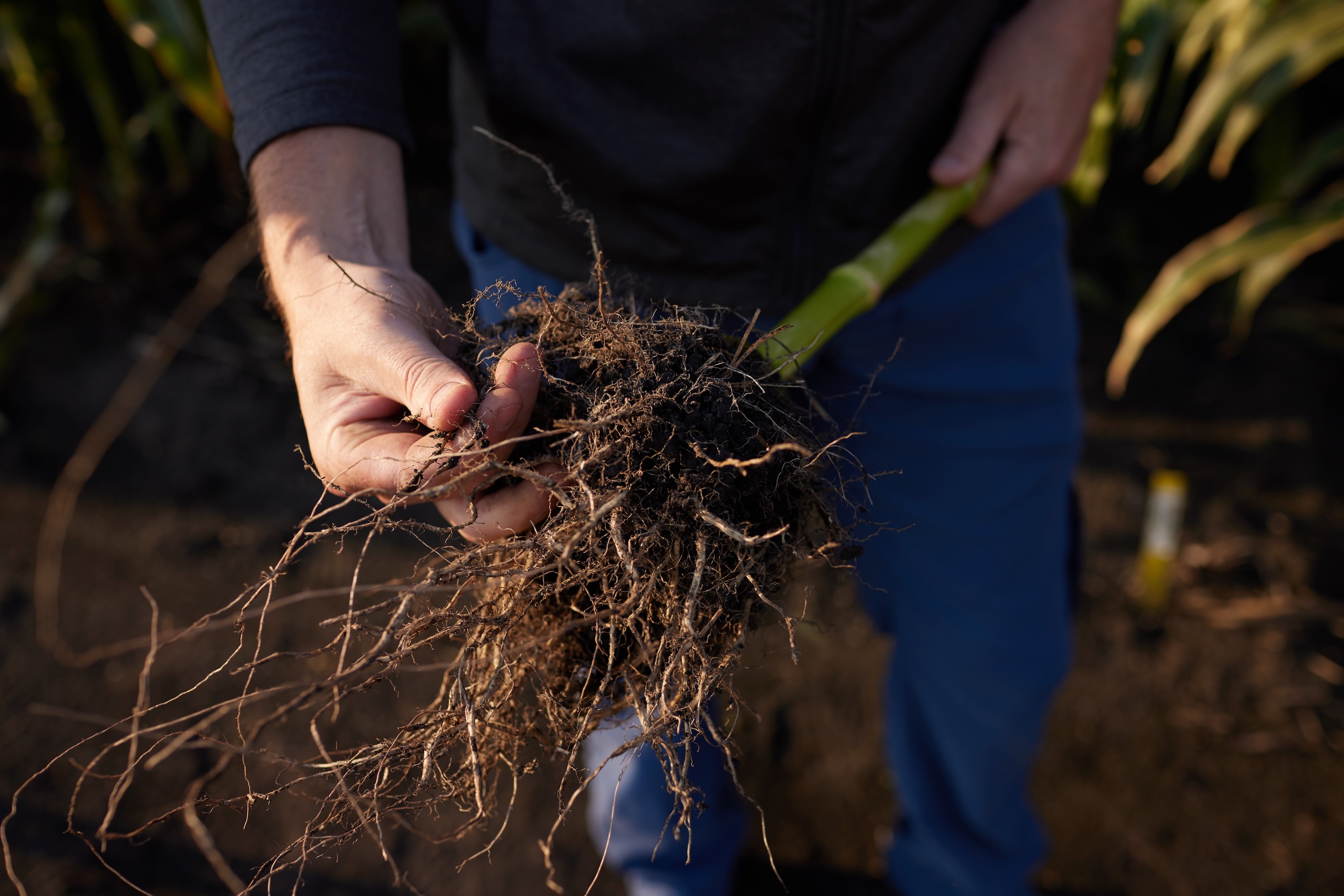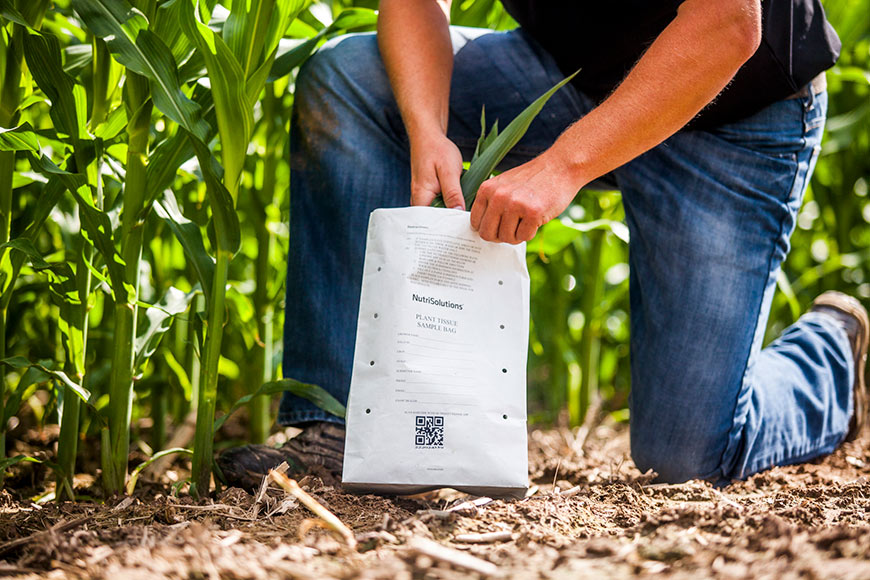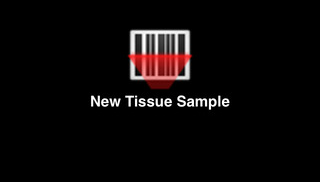Maximize Plant Health at Key Growth Stages

Plant Health Definition
First, let's get on the same page about what plant health means. At WinField® United, we define plant health as a holistic approach to keeping plants free from threats like diseases, insects and weeds, and preventing the plant from wanting for anything. This means ensuring plants have all the nutrients and resources they need to thirive and finding ways to enhance or boost their natural processes.
The Relationship Between Soil Health and Plant Health
You can’t have healthy plants without healthy soils. If below-ground fertility is subpar to start with, above-ground biomass potential will be limited right off the bat. While getting soil fertility in a good spot is largely a preseason tactic, foliar applications become critical in-season. Unfortunately, plants can’t talk to us and tell us what they need, but we can learn a lot by running tests and evaluating what they have. Soil tests alone don’t tell the whole story. Just because there are ample nutrients in the soil doesn’t mean the plants are able to take them up and use them properly. This makes tissue sampling an imperative in-season step to help you unveil hidden hungers plants may be experiencing that could be holding back their growth and development.
Key Growth Stages
Any tissue sampling you do will be helpful, but we recommend focusing your efforts on the V4-V6, V10-V12 and VT-R2 growth stages. Here’s why.V4-V6
During this small timeframe, there are four to six leaf collars on the corn plant, and it determines how many rows around its ear will be. Since this is a key yield-determining factor, it’s critical to make sure the plant has everything it needs for optimal development.
V10-V12
At this point, the plant is determining how many kernels long the ear will be, another key yield-determining factor. Again, it’s critical to ensure the plant has all the nutrients it needs to get the maximum length. This is also a common time for diseases to creep up; diligently prepare for potenitally making two fungicide applications to keep diseases at bay.
VT-R2
In this tasseling and reproductive time frame, it’s all about grain fill. During these growth stages, it’s time to pull out all the stops to keep the plant healthy and make sure it has access to all the nutrients it needs to make that ear or pod fill out. This is a great time to tank mix fungicides with micronutrients and add MasterLock® adjuvant to help with deposition and get products all the way through the canopy.
More on Fungicides
Fungicides play a key role in plant health by protecting plants from disease damage, but that’s not all. Strobilurin fungicides have additional plant health benefits, even when there is low disease pressure. They help suppress ethylene production, which is a hormone that exacerbates the aging process and causes plant cells to die. Fungicides can help plants stay green and photosynthesize for longer, which can be especially important in dry conditions.Across varying locations and conditions, trials have shown an average of 11.2 bushel per acre increases in corn yields when a fungicide is applied.1 That’s a hard return to pass up, but if you’re still skeptical of the ROI potential on fungicides, our Impact RxÔ prescription program is a great place to start. Impact Rx is a full-season prescription plan crafted with your local agronomist, customized to support your operational goals and help you manage risk. You can try out fungicide applications with minimal risk by getting data-driven, field-specific prescriptions. If the recommended practices don’t achieve the approved yield goal, you may be entitled to recover a service warranty claim.* This offers a unique opportunity to implement a new strategy with minimal risk and optimal probability of increased yield potential.
Response-to fungicide (RTF) scores are another great resource that can help you determine which hybrids to focus your investment on. The scores are based on randomized, replicated research trials conducted at WinField United Answer Plot® locations and indicate which hybrids have high, medium and low responses to fungicides. Your local WinField United retailer can share those RTF scores and help you set a solid strategy based on the response of each hybrid.
Biostimulant Solutions
Applications of micronutrients and typical pest control products are a tried-and-true way to enhance plant health and performance. MAX-IN® Ultra ZMB® Plus micronutrient delivers the three most commonly deficient nutrients (zinc, manganese and boron) in one efficient application at any time in season.In addition to classic pest control products and foliar nutrient applications, certain bio-based products can also help enhance plant health and performance.
Voyagro® biostimulant, for example, is a great stress mitigation tool. I often recommend this product for high-yielding situations where fertility or moisture stress is a challenge. It can be applied during late vegetative through tassel growth stages along with your fungicides. In soybeans, you can apply it around R1-R3 during the reproductive pod fill time frame.
YieldOn® biostimulant is a newer product designed to support better transport of sugars and nutrients throughout the plant. This helps enhance seed weight by packing starches and sugars into the kernel or pod. Similar to Voyagro, I recommend applying YieldOn at VT in corn and R1-R3 in soybeans.
Plant health may sound like just another buzzword, but it’s a critical part of managing a successful crop. Your local WinField United retailer is one of the best resources you have when it comes to managing plant health, in-season. They can help you scout, identify threats, prioritize purchases and access products. Contact them any time to discuss your plant health management plan.
1 WinField United, 41 locations, 2017.
*Agreement is required and conditions, restrictions and service fees apply. Percentage goals for the APH crop yield range from 95–105% for corn and 95–100% for soybeans. Due to factors outside of WinField United’s control, results to be obtained cannot be predicted or guaranteed by WinField United. Results may vary.
All photos are either the property of WinField United or used with permission.
© 2025 WinField United. Important: Before use always read and follow label instructions. Crop performance is dependent on several factors many of which are beyond the control of WinField United, including without limitation, soil type, pest pressures, agronomic practices and weather conditions. Growers are encouraged to consider data from multiple locations, over multiple years and to be mindful of how such agronomic conditions could impact results. MasterLock, Impact Rx, Answer Plot, MAX-IN, Voyagro and WinField are trademarks of WinField United. All other trademarks are the property of their respective owners.





